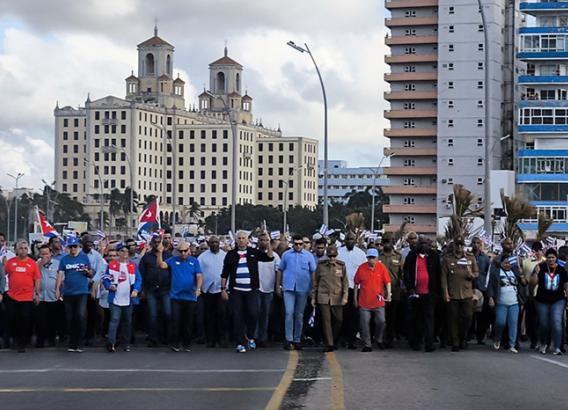Tal Memorial 3: Nepo and Giri lead youth charge
especiales

Ian Nepomniachtchi and Anish Giri lead the Tal Memorial after 3 rounds as they outplayed Vladimir Kramnik and Evgeny Tomashevsky in seemingly equal endings. The players with the white pieces were 7 or more years younger on each board and emerged with a 4:1 victory, as Shakhriyar Mamedyarov handed Boris Gelfand a second loss in a row, while Peter Svidler escaped by the skin of his teeth vs. Levon Aronian. Only Vishy Anand was on top vs. the “young” Li Chao, but was thwarted by accurate defence.
While the rest day after only two rounds of this year’s Tal Memorial drew some criticism, the result in Round 3 suggests we should lobby for more rest days in major supertournaments!
Tal Memorial Round 3 results (click a game to replay it with computer analysis)
There wasn’t a single dull game, with the quickest draw at one stage looking likely to provide the quickest win.
Li Chao ½-½ Anand
The 27-year-old Chinese star looked set to play a high price for losing a tempo with 14.g3!? (Vishy was “really surprised”; Li Chao explained he wanted to stop Black playing f4), with Anand getting the typical Nimzo-Indian play against the weak c4-pawn:
It dropped off here with 18…Bxc4 19.Bxc4 Nxc4, but it turned out that with the bishop on f4, and the white queen beginning an intrepid journey with 20.Qb3, White had just enough play against the c7-pawn to hold the draw. In fact, towards the end Vishy commented, “I’m kind of paralysed – I can’t move a muscle!”
Aronian ½-½ Svidler
Peter Svidler had some explaining to do after he spent 8 minutes pondering how to reply to the “f3 Grünfeld” (1.d4 Nf6 2.c4 g6 3.f3):
I’ve played every single move in this position in my career at least once, probably… The thing about f3 is that more or less everybody can play it, but they do it occasionally, and there’s such a tremendous amount of lines to repeat that I just get bored thinking about it, and I never repeat them. Then when people actually do play f3 against me I sit there thinking, “shall I test my memory without any crutches today or not?” Today ok, I thought, I recommended doing this in my videos, so let’s go for this and see if they can refute my stuff!
True to his word, Peter followed his recommendations up until 14…Na5, which you can see here in the eBook that accompanies his Grünfeld video series:
Levon chose 15.Bh6, that Magnus Carlsen played against Fabiano Caruana in Norway Chess 2014, though he claimed (we may choose to believe him or not) that he couldn’t remember what he should do after that. After 15…Bxh6 16.Qxh6 e6 Levon went not for Magnus’ 17.Nh3, but the outright aggression of 17.h4. As Svidler commented in his series on the same move in a different position:
In general, the whole point of the 3.f3 line is to castle long and try and give mate, which distinguishes it from the normal Grünfeld fare where White is perhaps more concerned with positional advancement.
Svidler sank into a 30-minute think over whether to go for 17…exd5 (his eventual choice) or 17…Qf8 immediately and invested another 24 minutes a few moves later, something he deeply regretted later. With time running out he found himself in what was objectively a very decent position, but given the necessity to navigate a constant choice of unclear options he explained that, “eventually from a practical point of view it becomes almost unplayable”.
There was a surprise conclusion, though. Levon picked up the pawn on c7, but according to Svidler he confessed to having missed that Black could not only play Nbd5 but 37…Nfd5:
Levon spent five minutes here trying, in his words, “to calculate 38.Qc2 to the end”, but failed and admitted to panicking that suddenly Black might have some shot like Rxa3+ after Rxf3. He was scathing after the game when describing his play to Sergey Shipov during the Russian live commentary:
I didn’t manage to win because of stupidity… Exchanging queens was of course incredibly stupid… an unforgivable mistake.
Peter was very relieved, noting that Levon could have kept queens on the board, made a quiet move and “asked me if I believe I’m not getting mated”. Instead the game lasted only three more moves after the queen exchange before Aronian offered a draw.
Mamedyarov 1-0 Gelfand
This game was a battle right from the off. Mamedyarov said he was surprised when Gelfand didn’t play the Grünfeld, and then especially by the strange-looking 12…Qh5. Two moves later Mamedyarov took what he described as a “cunning” decision:
The computer’s choice is 14.Nxd4, but Mamedyarov described the endgame there as, “the kind of position where you pretend you’re playing for a win, but you’ll never actually win!” So he kept queens on the board with 14.Qxd4, and after 14…Qc5 (which took Gelfand over half an hour) he responded with 15.e5! – if Black tries to go for the same ending with 15…Qxd4 16.Nxd4, then the previously strong 16…Nb6 runs into 17.Nxb6 axb6 18.Nxc6!. Instead after 15…0-0 16.Qe4 Mamedyarov was very happy not only to have his queen on the board but to have it on a perfect central square.
Boris’ queen, meanwhile, went after the b2-pawn, though that wasn’t the key mistake - in fact, Shak said he would have played the same way himself. The moment of truth came after 20.e6!
Mamedyarov explained that Black had to play 20…Bf6!, when he was planning 21.Ng4!? Bxd4 22.exf7+ Kxf7 23.Nxh6+! – White has at least a draw, though according to the computer only a draw. Shak half-joked himself that he’s sure he would have found a way to play for a win and lose.
In the game 20…Bxe6? 21.Nxe6 fxe6 22.Bh3! was what Gelfand told Mamedyarov he’d missed after the game – with the plan of Bxe6-b3-c2 devastating. For a second round in a row Boris found himself playing …g5 and seeing his kingside position fall apart.
Nepomniachtchi 1-0 Kramnik
Ian Nepomniachtchi was the powerhouse of the Russian team at the Olympiad, but he hasn’t been sparing his teammates at the Tal Memorial, beating first Tomashevsky and now none other than Vladimir Kramnik. It should be said that Nepo has been here before, also pulling off a win over Kramnik in the 2011 Tal Memorial, and given the form he’s been in recently this was no great surprise. What was perhaps a mild surprise, though, was how well Ian handled the opening.
He played 1.c4 and varied from Svidler’s 11.Qd2 in Round 1 against Kramnik with 11.Qf4, calling that a “little test” rather than an improvement. He joked that Kramnik “unsurprisingly was prepared”, but though Vladimir played the novelty Ian was still in his home preparation, noting a move like 17.Ng5!, keeping a slight advantage for White, isn’t the kind of thing you do lightly without computer backing. The players only slowed down after move 20, with things beginning to get interesting after 24…g5:
Nepomniachtchi confessed this came as a surprise as he hadn’t understood the point of Kramnik’s Bb2-f6 on the previous move, but he wasn’t worried, noting he’d planned to play 25.f5 himself anyway. As against Svidler, Kramnik was playing provocatively by pushing his flank and central pawns in a desire to win, but though the knight was driven back to e1 it would go on to have a remarkable career (as you can see in the diagram above).
It looked as though Nepomniachtchi was on the path to victory, but he was “surprised” by the instant 32…Kh6! and “not thrilled” when he saw 35…Kg5!!. It seemed Kramnik might pull off a brilliant escape, but after 36.Rxf7 (a tough but good choice for Nepo) the moment of truth arose:
36…Bxf2? was almost a brilliant conclusion to the game, since after 37.Rg7+ Kf4 if White plays 38.f6? Bh4! he has to give up the pride and joy of his position - 39.f7?? is actually mate-in-3 after 39…Ne3+. Kramnik was in deep time trouble, though, and what he’d missed – and one of the best calculators in world chess hadn’t - was 38.e3+!, which spoiled all Black’s dastardly plans.
The correct move, as Nepomniachtchi said a “very upset” Kramnik pointed out after the game, was 36…Nxf2! Nepomniachtchi commented that, “my opponent considered, as usual, that he’s already winning here”. That doesn’t seem to be the case, but it is true that Vlad would have had excellent drawing chances.
Instead the rest of the game was very much one-way traffic, though no less beautiful for that – 45.Be2+!! was an elegant conclusion:
If now 45…Kxe4 46.f7 Ra8 White wins the rook and game with 47.Bf3+. Instead there followed 45…Kd4 46.f7 Ra8 47.Ng5 and the f-pawn decides the game.
That single result knocked Kramnik down from world no. 2 to no. 4, saw Nepomniachtchi climb one more place to no. 14, and, perhaps more importantly, saw him take the sole lead in the 2016 Tal Memorial! The second youngest player in the tournament was only in the sole lead for another hour or two, though, since the youngest player has also hit form:
Giri 1-0 Tomashevsky
The final winner of the day was Anish Giri, who made it two in a row. If there were shades of Tal about his win over Gelfand, the likes of Capablanca, Kramnik and Carlsen were the players of reference for his 82-move win over Evgeny Tomashevsky.
Can White really win this position against a technician of Tomashevsky’s quality? It turned out the answer was yes, with a well-timed d5-break provoking weaknesses and a white king and knight eventually dominating the black bishop. Anish handled the instructive ending almost flawlessly, despite playing on the 30 seconds a move increment and the cackle of the 7-piece tablebases in the background!
So Tomashevsky and Gelfand have company in their misery on 0.5/3, while Nepomniachtchi and Giri lead on 2.5/3 with Anand in hot pursuit half a point behind.
Friday’s Round 5 sees Kramnik-Anand, though that match-up has tended towards draws since their World Championship match. The games of the leaders – Svidler-Giri and Nepomniachtchi-Aronian – may be the ones to watch. Tune in again from 14:00 CEST for live commentary in English, Russian and Spanish (the shows are available to rewatch on ChessCast's Livestream page).
























Add new comment